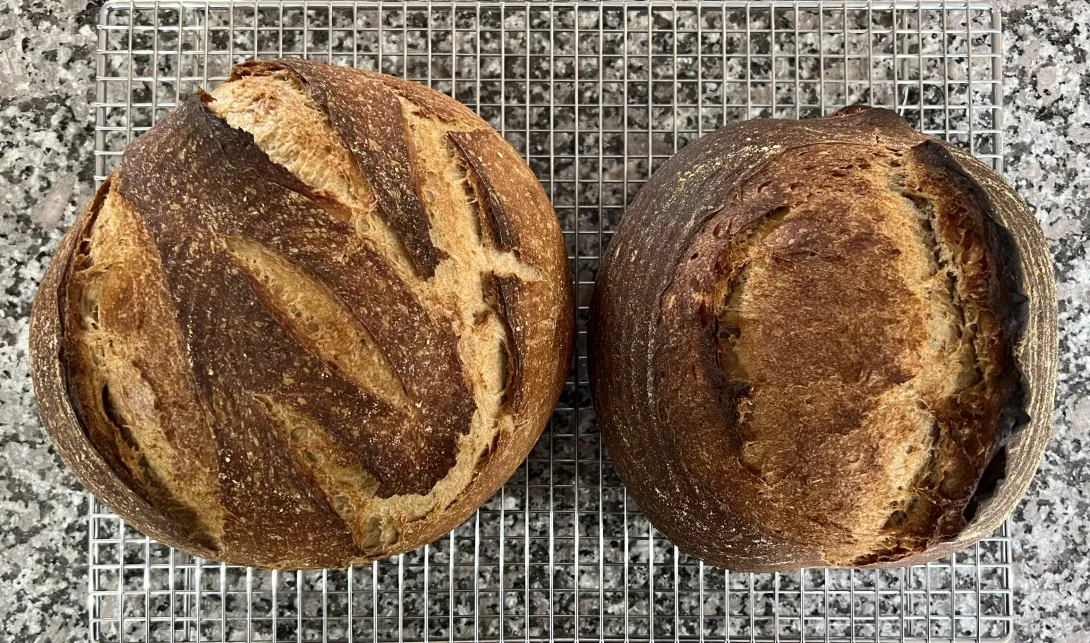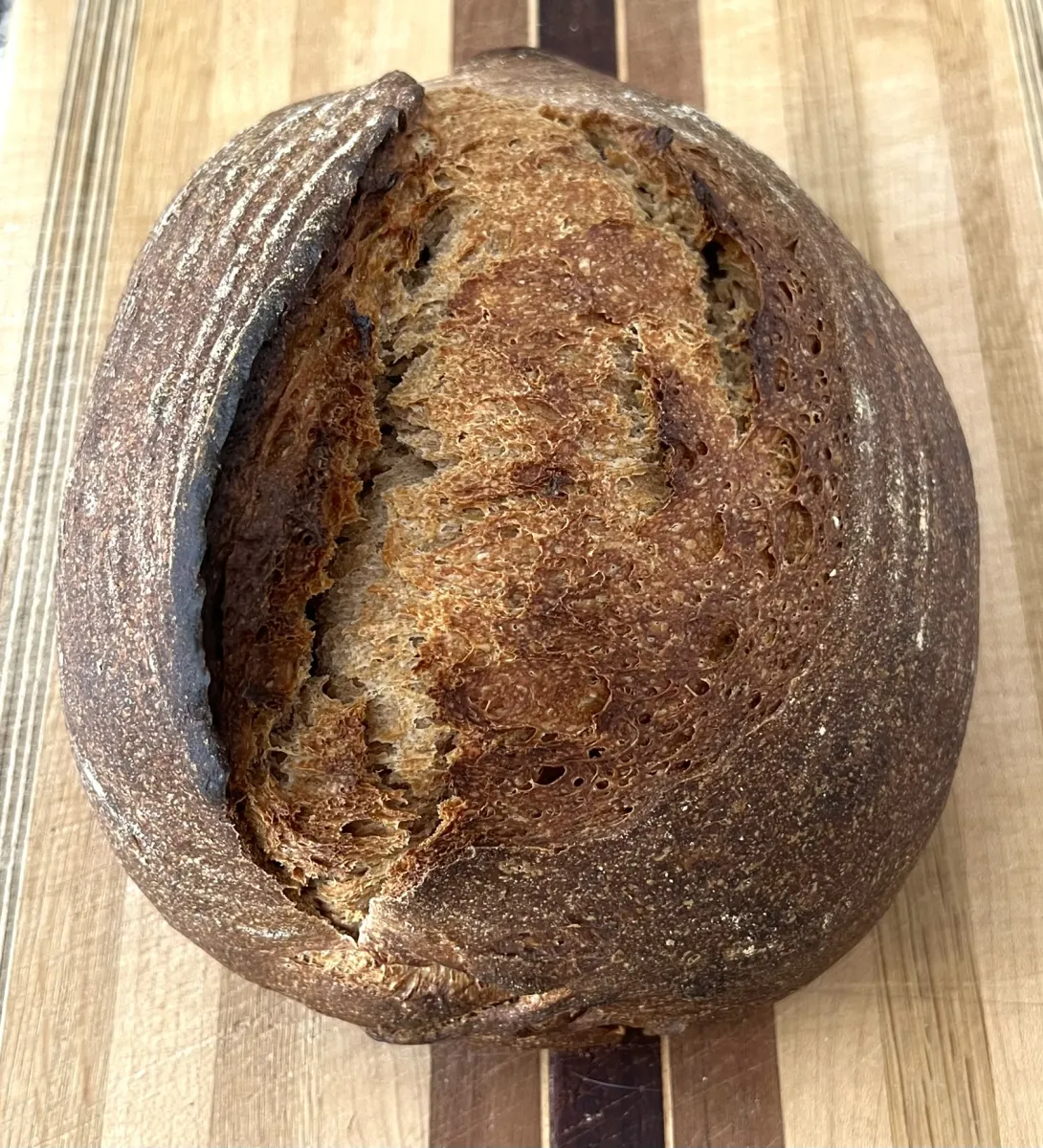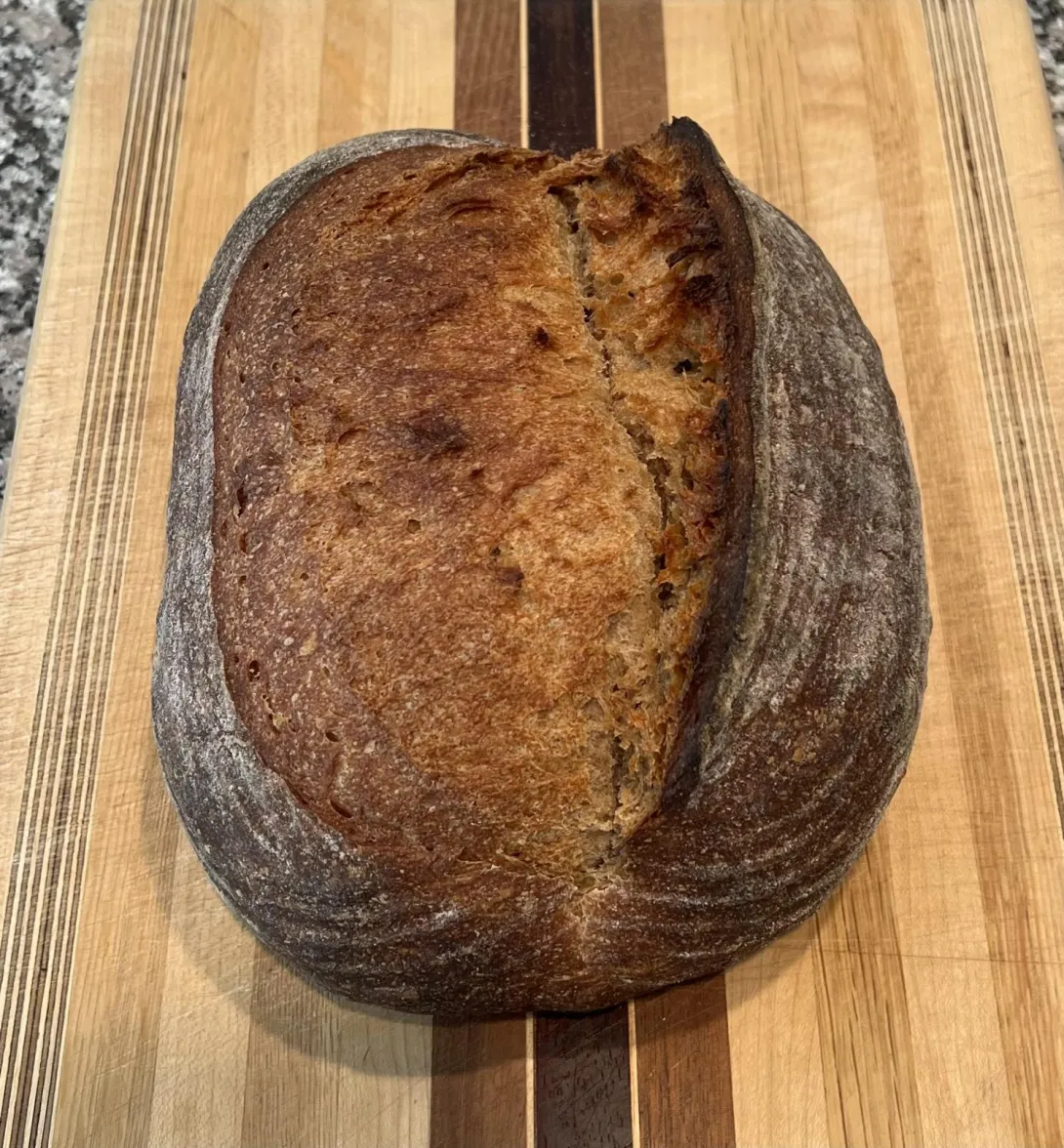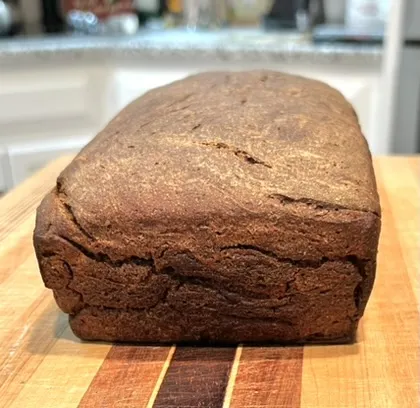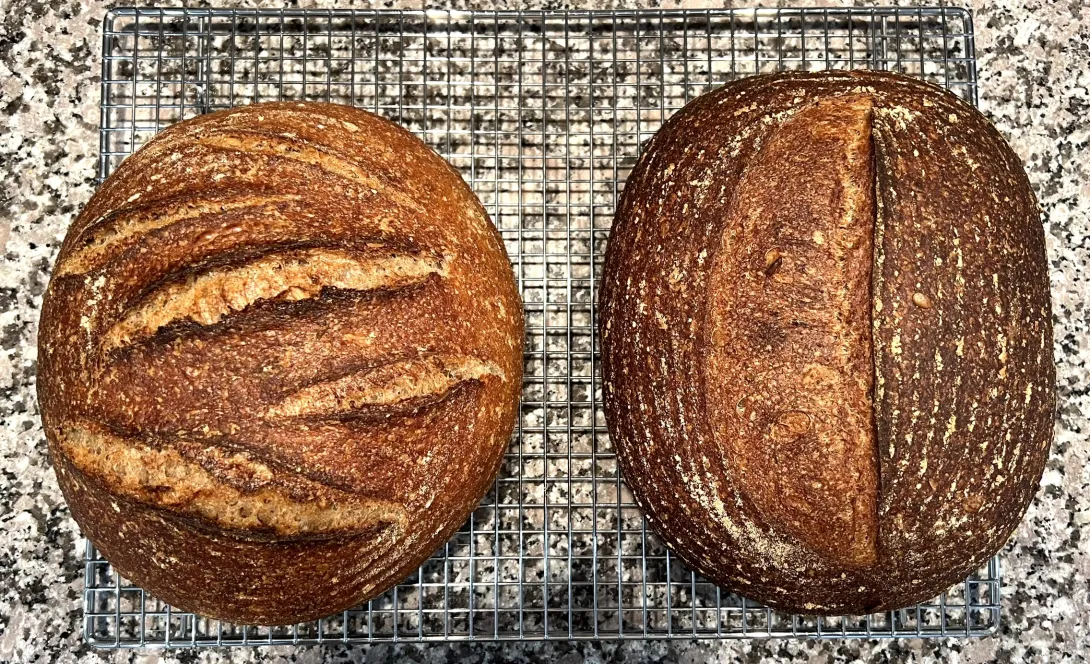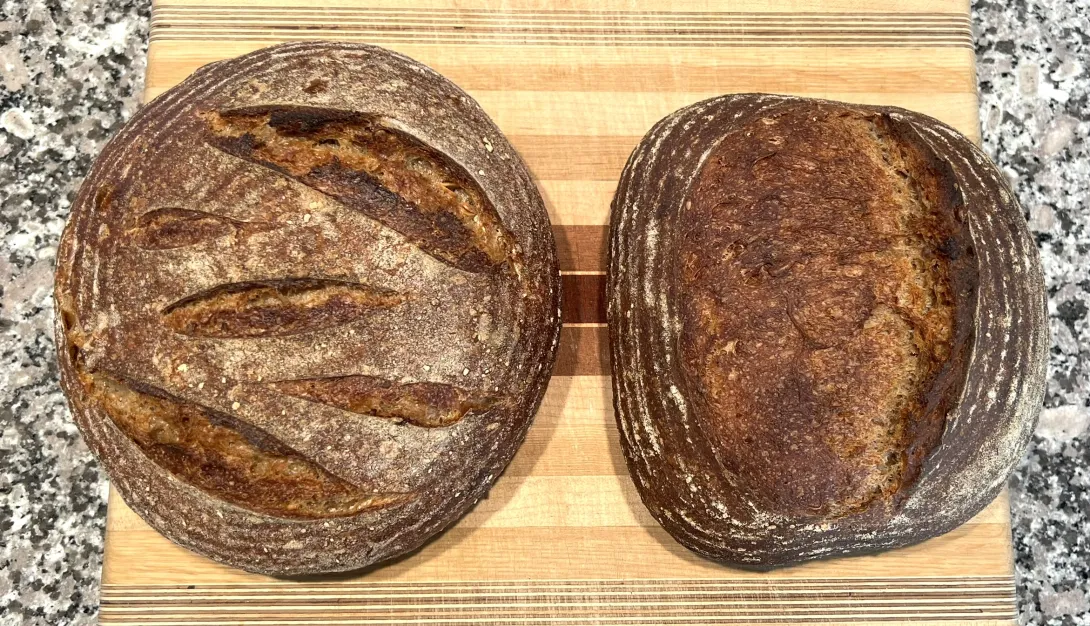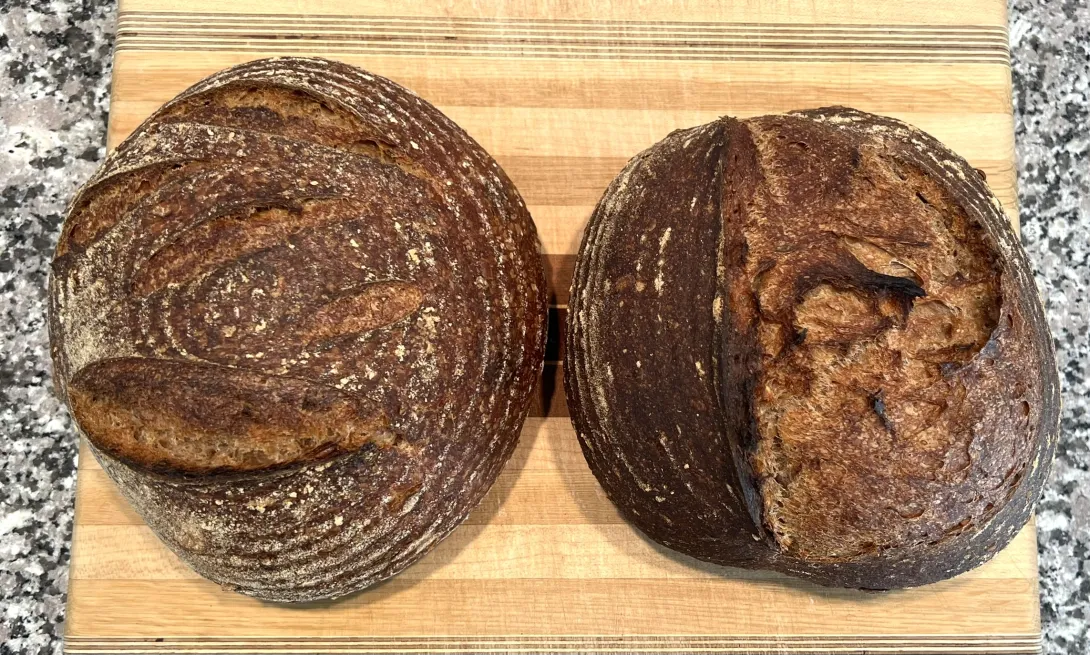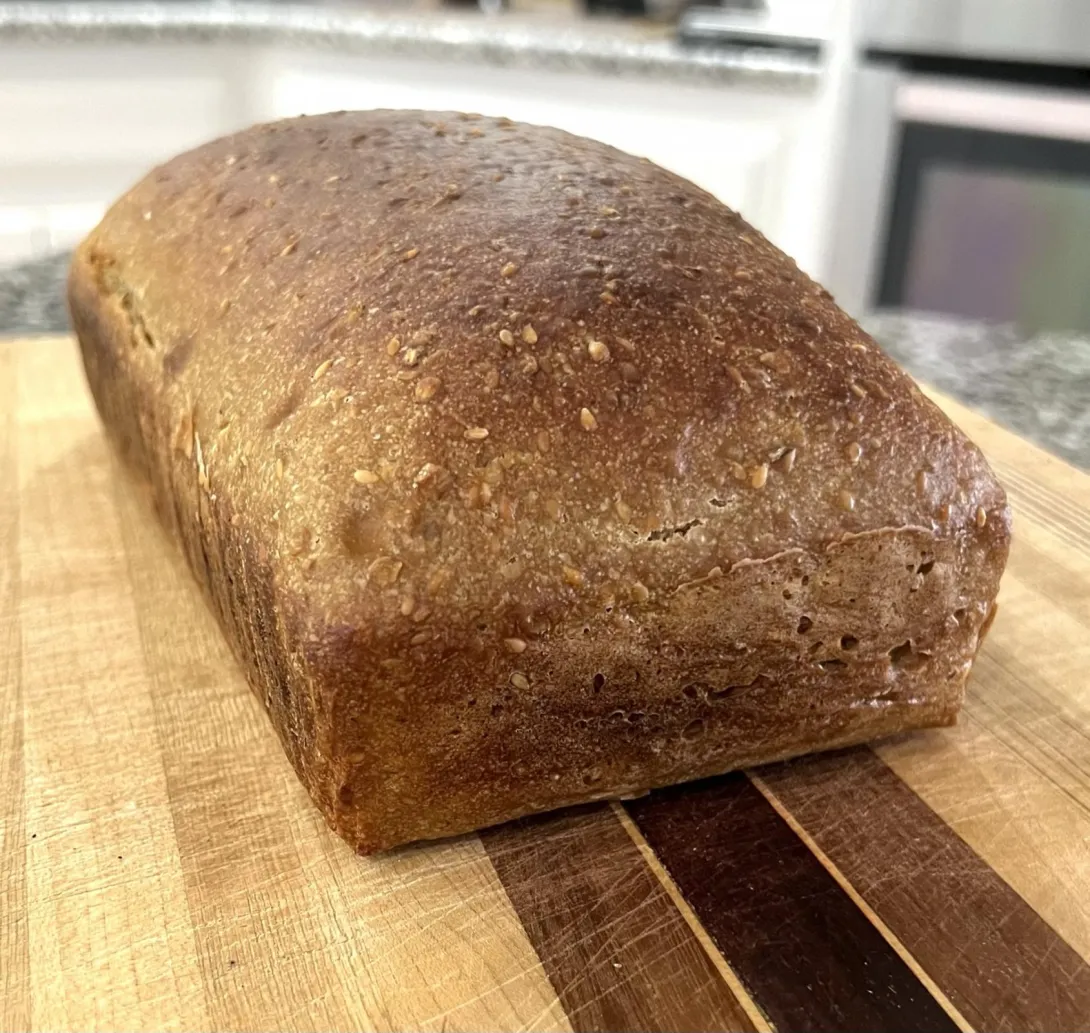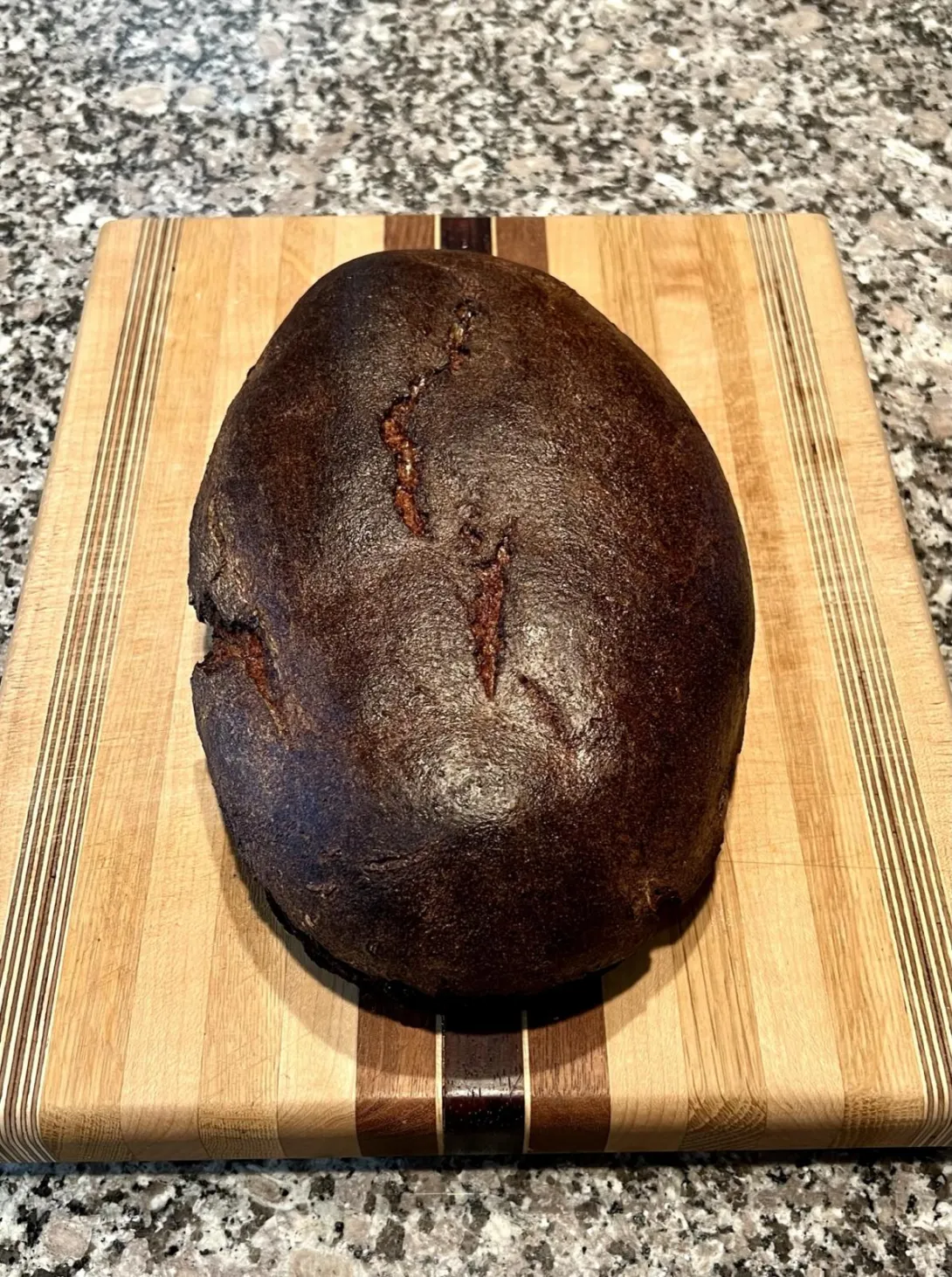Another Danish Rugbrod
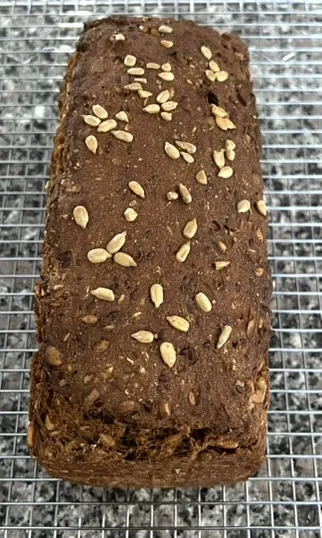
Here is yet another Danish Rugbrod for those who like rye bread. This recipe came from a website named makebread and is very simple.
Late one evening I mixed some sourdough starter (100 g), rye flour (300 g), pumpkin seeds (95 g), sunflower seeds (95 g), flaxseeds (50 g), molasses (40 g), and water (650 g) in a large bowl. Not knowing what to expect, I opted for a 4-quart Pyrex bowl with a lid, and that turned out to be a good choice, especially when adding the final dough ingredients.
